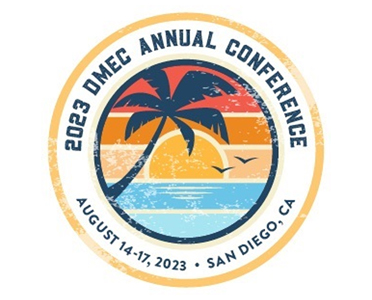As another quarter passes us by, the leave and disability world keeps on turning – and our knack for turning songs into leave of absence anthems keeps on thriving:
“This thing called leave,
I just can’t handle it.
This thing called leave,
I must get ’round to it.
I ain’t ready –
Crazy little thing called leave.”
It’s true, is it not? Some employers just can’t handle this crazy little thing, and some employees can’t seem to get around to requesting it. But fret not: knowledge is power, and we’ve got another riveting round of updates on the past quarter’s happenings. From expanded rights for lactating employees to PFML program portal innovations and fancy purple FMLA posters, get ready to get up to speed on this crazy little thing called leave.
FEDERAL UPDATES

New FMLA Opinion Letter from the Department of Labor
The Department of Labor gifted us another compelling nuts ‘n’ bolts FMLA Opinion Letter providing excellent clarity on the impact of holidays on the decrement of FMLA entitlement.
The letter contains some great clarifying examples of the regulations’ two main points on this subject:
1) If an employee takes off a whole work week for FMLA, the holiday counts as FMLA time.
2) If the employee works at all within the same work week in which the holiday occurs, the holiday does not count as FMLA time.
P.S. Image above is representative of how engaging DOL Opinion Letters are to review.

Additional Guidance on PUMP Act
Last quarter, we provided an overview of the PUMP Act, which expands workplace protections for lactating employees.
In May, the U.S. Department of Labor Wage and Hour Division (WHD) published a Field Assistance Bulletin No. 2023-02 providing guidance to agency officials responsible for enforcement of the “pump at work” provisions.
This guidance provides a glimpse into how the WHD understands and will enforce the rights now available to most employees under the Fair Labor Standards Act for reasonable break time and a place to express breast milk at work for a year after a child’s birth.
Here are a few highlights.
- Frequency and Duration of Breaks. Employees are entitled to breaks every time they need to pump and the length and frequency of breaks will vary by employee. Employers and employees may agree to a certain schedule based on the employee’s need to pump, but the WHD advises that employers cannot require employees to comply with a fixed schedule.
- Compensation. Time for pump breaks may be unpaid unless otherwise required by law. Employers should pay careful attention to the FLSA’s standard requirements for counting and compensating hours worked.
- Privacy Requirements. Employees must have access to a place to pump that is (1) shielded from view; (2) free from intrusion from coworkers and the public; (3) available each time it is needed by the employee; and (4) not a bathroom. Teleworking employees must also be free from observation from a computer camera or other similar device while pumping.
- Functional Space Requirements. The location must be “functional” for pumping: “A space must contain a place for the nursing employee to sit, and a flat surface, other than the floor, on which to place the pump. Employees must be able to safely store milk while at work, such as in an insulated food container, personal cooler, or refrigerator. Ideally, spaces to pump breast milk should also include access to electricity, allowing a nursing employee to plug in an electric pump rather than use a pump with battery power, which may require more time for pumping. Access to sinks near to the space provided to pump so that an employee can wash their hands and clean pump attachments also improves the functionality of the space and may reduce the amount of time needed by nursing employees to pump breast milk at work.”
- Small Employer Exemption. In limited circumstances, employers with less than 50 employees nationwide may be exempt from the PUMP requirements if they can demonstrate that compliance would cause an undue hardship.
- Poster. Employers should post the WHD’s updated FLSA poster.
Additional resources for employers are available at Pump At Work webpage.

New FMLA Poster
Who’s ready for the thrill of their lifetime? The Department of Labor published a new FMLA poster! Okay, I might be overselling this just a smidge, but let’s not judge.
Covered employers are required to post an FMLA poster in conspicuous locations where employees are employed and where it can be readily seen by employees and applicants.
Covered employers also must provide the information contained in the poster to each employee by including the poster and/or its contents in handbooks or other written guidance, or by distributing a copy of the poster to each new employee upon hiring.
But don’t fret, the September 2013 and April 2016 poster editions are still effective . . . which makes me wonder why the DOL published a new one, but maybe they really like the color purple. The new version clarifies just as much as the others, but it also includes a QR code. You can access the latest edition here.
CASE LAW

In a recent case, an employee with back spasms, sciatica, fibromyalgia, and pinched nerves claimed her employer didn’t provide the help she needed to do her job.
The plaintiff requested a “standing footrest” and “ergonomic chair” as reasonable accommodations. But she claimed she received a “rocking footrest” and a “dilapidated ergonomic chair.”
To establish a case for failure to accommodate, the plaintiff must show:
- He or she is a person with a disability under the ADA.
- The employer knew about the disability.
- The employee can perform the essential functions of the job with reasonable accommodation.
- The employer refused to make such accommodations.
A reasonable accommodation enables an individual with a disability to perform the essential functions of that position or to enjoy equal benefits and privileges of employment. Employers are not obligated to provide the exact accommodation the employee is requesting, rather one that is effective.
Before we assume this employer had to write a blank check, the plaintiff conceded she could perform the essential functions of her job despite the ineffective equipment received. Plus, she identified no “benefits or privileges of employment” she could not enjoy because of the chair and footrest provided.
The plaintiff attributed one leave of absence to an injury caused by the first ergonomic chair provided, but after she complained, another chair was provided, and subsequent leaves were not attributed to the second chair.
So, in this case, the defendant (employer) prevailed.
But, I caution you, employers should not mess around with relatively easy-to-provide accommodations. It’s for this reason that we recommend maintaining a list of accommodations that will be “automatically approved,” assuming the proper verification is submitted to substantiate the need. Think ergonomic keyboards or chairs, sit-to-stand desks, back braces, etc. These low-cost items are not going to create a hardship, do not typically warrant a detailed interactive process, and create efficiencies when the needs arise.
UPCOMING EVENTS

DMEC’s Annual Conference is in San Diego from August 14–17. TPG will be speaking and hosting a booth! Stay tuned for more information and please let your account manager know if you plan to attend!
TPG is a National Sponsor for DMEC and as a result, we can offer a $100 discount on registration fees. As a TPG client, please register here using the coupon code AC23_SPONSORCLIENT at checkout to save your organization some $$!
STATE UPDATES
COLORADO
Colorado Paid Family and Medical Leave Insurance (FAMLI)
Provider Accessibility to Benefit Application System
The FAMLI benefits application system will allow healthcare providers to register and make a recommendation on leave duration for their patients based on their condition or treatment plan. This feature makes the Colorado program more innovative than many other states’ and creates the potential for faster claims processing. The more providers who use the online system means fewer patients will need to bring documents to an office during stressful life events.
The State anticipates launching the healthcare provider portal towards the end of the summer. Once it’s ready, step-by-step user guides and how-to videos will be published.
Benefit Calculation
Employees may receive paid family and medical leave insurance benefits for up to 12 weeks per year for a variety of reasons. An employee’s benefit amount is based on their average weekly wage earned from the job or jobs from which they are taking paid family and medical leave. A recent amendment removes the requirement that the average weekly wage be only the wage earned from the job or jobs from which the individual is taking leave. Rather, if a worker has recently switched jobs before taking leave, the income from their previous job will be included when calculating their average weekly wage.
Supplemental Sick Leave for COVID-19 Suspension
Since January 1, 2021, Colorado’s Healthy Families & Workplaces Act (HFWA) has required employers to provide up to 80 hours of supplemental public health emergency leave (“PHE leave”) for conditions relating to COVID-19. That obligation ended on June 9, 2023.
PHE leave is triggered by certain pandemic, infectious disease, or other disaster emergencies declared by the governor or a federal, state, or local health agency, and remains in effect until four weeks after the expiration of such emergency declarations. As of May 11, 2023, declarations by the Colorado governor and federal public health authorities expired.
Colorado employers must continue to comply with other components of the HFWA which includes providing up to 48 hours of Paid Sick and Safe Time Leave each year.
Future public health emergencies will trigger the obligation to provide PHE leave in the state.

MARYLAND
Paid Family and Medical Leave Insurance Program – DELAYED
Approximately one year ago, Maryland passed the Time to Care Act, which was set to have contributions go live on October 1, 2023, with benefits available to employees on January 1, 2025. Maryland is taking a cue from Oregon’s book and delaying implementation. Contributions to the program will now begin for both the employer and employees on October 1, 2024. Eligible employees may begin to use benefits on January 1, 2026.
Additionally, in May 2023, the state made the below notable changes to the legislation:
- Contributions to the program will be split 50/50 between employers and employees. However, employers may choose to pay more than 50%. The split was previously undetermined.
- Program contributions may not exceed 1.2% of an employee’s wages and will be applied to all wages up to and including the Social Security wage base. The initial contribution rate that goes into effect October 1, 2024, will be in place until June 30, 2026. Thereafter, contribution rates will be set on an annual basis on or before each February 1.
- As we’ve seen in other states, if paid leave also qualifies under the FMLA, the paid leave will run concurrently with and not in addition to FMLA. Employees may not be required to exhaust or use certain paid leave benefits (e.g., vacation, PTO, and sick leave) before or while receiving program benefits.
- Domestic partners are now included as a covered “family member.”

MINNESOTA
Paid Family & Medical Leave
Minnesota has enacted a mandatory Paid Family and Medical Leave program!
The bill provides eligible employees up to 12 weeks of family and medical leave benefits, subject to a 20-week annual limit. Eligible workers will be permitted to receive compensation through the new state family and medical benefit insurance program beginning January 1, 2026.
The law applies to all private businesses as well as state or local government sector employers and charter schools. Employers may opt out of the state-run program if they offer paid leave benefits equal or more generous than the state’s.
To be eligible, an individual must have earned at least 5.3% of the state’s average annual wage in total over the “base period” (currently $3,500 per year).
An EE is eligible for family leave benefits to:
- address their own serious health condition, including pregnancy;
- care for a covered family member with a serious health condition;
- bond with a new child;
- address certain needs related to the domestic abuse, sexual assault, or stalking of the worker or the worker’s family member (safe leave); and
- address certain needs arising from a family member’s military deployment.
Family members are defined broadly and include a child, spouse, domestic partner, parent, sibling, grandchild, or grandparent and several relationships by marriage. Covered individuals will also be eligible for leave if they have been selected by an incapacitated person to be their caretaker.
Employees who take leave are entitled to continued employee health benefits and reinstatement to an equivalent position unless the employer can show that the employee would not otherwise have been employed at the time reinstatement is requested.
Paid Sick Leave
As if this wasn’t enough for Minnesota employers to digest, on May 24, the governor signed another bill that creates statewide paid sick and safe leave for eligible employees and expands protections for pregnant and nursing employees.
Beginning January 1, 2024, Minnesota employees will be entitled to receive up to 48 hours of sick and safe time (ESST) in a year.
The law applies to all individuals or businesses with one or more employees and any employee who performs work for at least 80 hours in a year in Minnesota.
Employees begin accruing at the commencement of employment and will accrue a minimum of one hour of ESST for every 30 hours worked up to a maximum of 48 hours of ESST in a year.
Employees must be permitted to carry over accrued but unused paid sick leave benefits, but the total amount must not exceed 80 hours at any time, unless the employer agrees to a higher amount. ESST is not required to be paid out at separation.
Employers may also frontload. Employers who frontload are not required to allow employees to carry over unused ESST at the end of the year.
An eligible employee may use ESST as soon as it is accrued for any one of the following reasons:
- To address an employee’s own or care for a family member: (i) mental or physical illness, injury, or other health condition; (ii) need for diagnosis of that condition, or (iii) need for preventive medical or healthcare.
- Absences related to domestic abuse, sexual assault, or stalking of the employee or the
employee’s family member. - The employee’s place of business closes due to weather or other public emergency or when the employee must care for a family member whose school or place of care has been closed due to weather or other public emergency.
- The employee cannot work or telework because the employee is: (i) prohibited from working by the employer due to health concerns related to the potential transmission of a communicable illness related to a public emergency; or (ii) seeking or awaiting the results of a diagnostic test for, or a medical diagnosis of, a communicable disease related to a public emergency and such employee has been exposed to a communicable disease or the employee’s employer has requested a test or diagnosis.
- Determination by health authorities having jurisdiction or by a healthcare professional that the presence of the employee or family member in the community would jeopardize the health of others because of the exposure to a communicable disease, whether or not the individual has actually contracted the communicable disease.
“Family member” includes any individual “related by blood or whose close association with the employee is the equivalent of a family relationship.” Employees may also designate one individual annually who will be considered a “family member” for purposes of ESST.
Employees who take ESST are entitled to continued health benefits and to reinstatement at the same rate of pay the employee had been receiving when the ESST leave commenced.
Pregnant Employees
And finally, the bill also includes amendments expanding existing statutory protections for pregnant and lactating employees that will take effect July 1, 2023, and apply to all employers with one or more employees.
Employers must provide reasonable accommodations to employees experiencing health conditions related to pregnancy or childbirth unless the employer can demonstrate the accommodation would impose an undue hardship on the operation of the employer’s business. Many states throughout the US have adopted similar legislation.
An employer may not require a pregnant employee to obtain the advice of a provider of an undue hardship for the following accommodations: (1) more frequent or longer restroom, food, and water breaks; (2) seating; and (3) limits on lifting over 20 pounds.
For lactating employees, employers must continue to provide reasonable break times each day to an employee who needs to express milk. The break times may run concurrently with any break times already provided to the employee. The law also removed language (i) stating employers were not required to provide breaks if it would unduly disrupt the business and (ii) limiting the time an employee can take these breaks to the 12 months following birth. Employers may not reduce an employee’s compensation for time used for the purpose of expressing milk.
Employers must still make reasonable efforts to provide a room or other location that meets the statutory specification for employees to express milk but must also make reasonable efforts to provide a space that is “clean, private, and secure.”
Finally, there are new notice requirements. Employers must inform employees of their rights regarding pregnancy and lactation accommodation at the time of hire and also when an employee makes an inquiry about or requests parental leave. Employers must also include notice of employee rights and remedies in the employee handbook. The Commissioner of the Department of Labor & Industry will publish the required notice.

OREGON
Paid Leave Oregon
Q2 Combined Payroll Reporting Deadline
For employers participating in the state plan or offering an equivalent, the deadline for submitting Q2 reporting via Frances Online is July 31, 2023.
The Paid Leave Oregon reporting process has been combined with the existing UI reporting process. Here are more key details:
- Frances Online replaced the Oregon Payroll Reporting System (OPRS) and the Employer Account Access (EAA) portal late last year.
- Reporting for each quarter is due by the last calendar day of the month following each calendar quarter (i.e., 4/30 for Q1, 7/31 for Q2, and so on).
- The Paid Leave Oregon website outlines what employers will need to do here in great detail – See the section called “Get ready to file your quarterly reports.”
- Please note these instructions are specific to employers that are going with the state OR are pursuing an equivalent plan but did not file a declaration on time.
Program Solvency
In March, news broke that an Oregon lawmaker wanted to give the State Employment Department flexibility to further delay the Paid Family and Medical leave program if the agency is unable to collect enough money by September to adequately fund it. This resulted in the passing of a bill that provides the director of the department until August 11 to determine if the fund will be solvent. If it is not solvent, benefits go live will be stalled until December 3, or even next year if the solvency test done after the Q3 contributions come in still shows funds not being sufficient.
The bill is silent on the impact to equivalent plans, but we’ve since learned the state intends for equivalent plans to match the state’s go-live date, should the program be delayed.
We know preparation for this complex program is a job and a half, and the unknowns associated with go-live create that much more heartburn. TPG is doing all we can to stay up on the latest and will keep you informed as we learn more!
Oregon Family Leave Act (OFLA) & Paid Leave Oregon Conflict
Many of you are struggling to not only revise policies and employee handbooks, but also trying to work your way through the complexities associated with pay integration and leave stacking.
One of several inconsistencies between OFLA and Paid Leave Oregon is the way the two regulations treat the use of an employee’s accrued leave. However, Oregon’s Bureau of Labor & Industries (BOLI) released guidance in April.
Under OFLA, an employee taking family leave “is entitled” to use any paid accrued sick leave, vacation, or any other paid leave offered by the employer during the family leave. However, under Paid Leave Oregon, an employer “may permit” an employee to use such accrued leave time to “top up” their benefit to receive 100% of their pre-leave wages. Here lies the conflict – under OFLA, employees have the “right” to use accrued PTO on leave; under Paid Leave Oregon, the use is up to the employer.
Before your train jumps off the tracks, thankfully, BOLI weighed in. When there is a conflict of laws, the employer must provide the benefit that is more beneficial to the worker. This means that so long as an employee’s claim for Paid Leave is also OFLA eligible, the employer must allow the employee to choose whether to top off their paid leave benefit.
In scenarios where OFLA is not in play, an employer may be able to deny employees the choice to top off their paid leave benefits absent agency or Legislative clarification.

TENNESSEE
Tennessee enacted a new law related to the creation of paid family leave insurance. Under the law, an insurer licensed to issue life or disability insurance in Tennessee can also issue a policy covering paid family leave. The paid family leave policy may be issued as an amendment to a group disability or life insurance policy, or as a separate group insurance policy. The law does not require an employer to sponsor a paid family leave insurance plan for its employees.
Under the law, the insurance will pay a portion of lost income due to the birth or adoption of a child, placement of a child for foster care, care of a family member with a serious health condition, or the status of an employee’s family member who is a service member on active duty or who has been notified of an impending call to active duty.
Tennessee joins both Virginia and New Hampshire in enacting laws that provide paid family and medical leave on a voluntary basis.

VIRGINIA
Virginia’s governor signed a law in April mandating employers provide unpaid organ donor leave. The law goes into effect on July 1, 2023.
Virginia employers with at least 50 employees must provide unpaid leave to organ and bone marrow donors. Employees are eligible if they were employed by their current employer for at least 12 months and worked at least 1,250 hours in the preceding 12 months.
The eligible employee must provide written physician verification to the employer that (i) the eligible employee is an organ or bone marrow donor and (ii) there is a medical necessity for the donation. Employers must offer 60 business days of unpaid leave in any 12-month period for organ donation and 30 business days of unpaid leave in any 12-month period for bone marrow donation.
Employers must continue to provide employees health benefits and pay any commission due because of work performed prior to the leave. Eligible employees are entitled to be restored to the same or an equivalent position and retaliatory action for taking organ donor leave is prohibited.
HAVE QUESTIONS FOR OUR TOTAL ABSENCE MANAGEMENT TEAM?
CHECK OUT OUR BLOG




